The powerhouses of opportunity: Today’s community colleges
This is a preview of our Texas 2036 newsletter taking a deep dive into the state’s powerhouses of opportunity — its community colleges. To receive this weekly look at our work, sign up here.
Texas community colleges: Shaping tomorrow’s opportunities

Today’s community colleges have been undergoing a remarkable transformation, evolving in tandem with students’ interests, community needs and employer opportunities.
Community colleges provide flexible opportunities for students to work part-time while adding valuable professional skills, gaining vital workforce experience while minimizing debt and creating a flexible, adaptable approach.
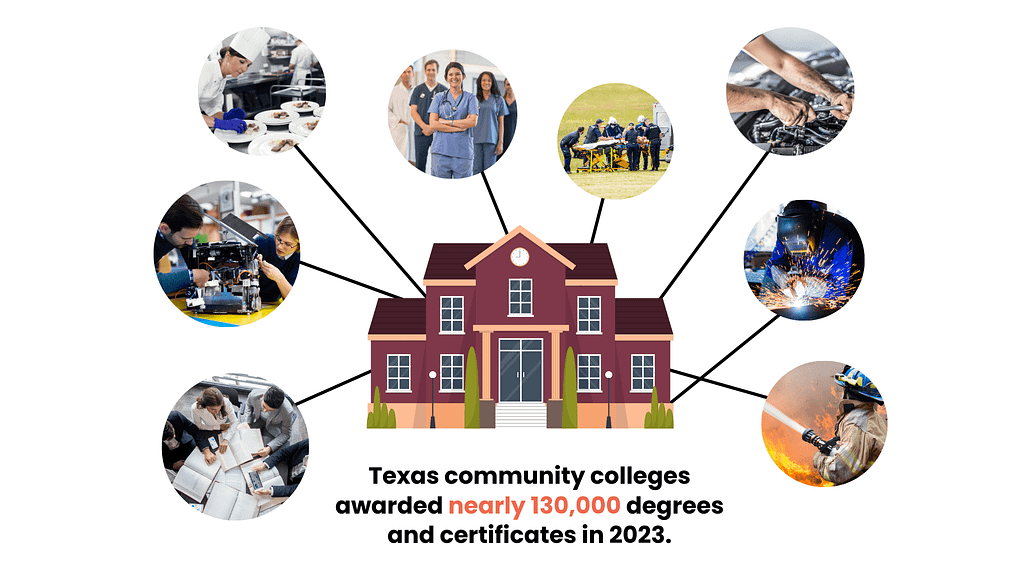
These institutions also partner closely with high schools, offering thousands of young Texans the opportunity to earn dual credits or even an associate degree before high school graduation.
If trends look like last fall, close to 678,000 students are preparing to start the fall semester at one of Texas’ 50 community college districts. We thought it would be a great time to take a fresh look at these important institutions.
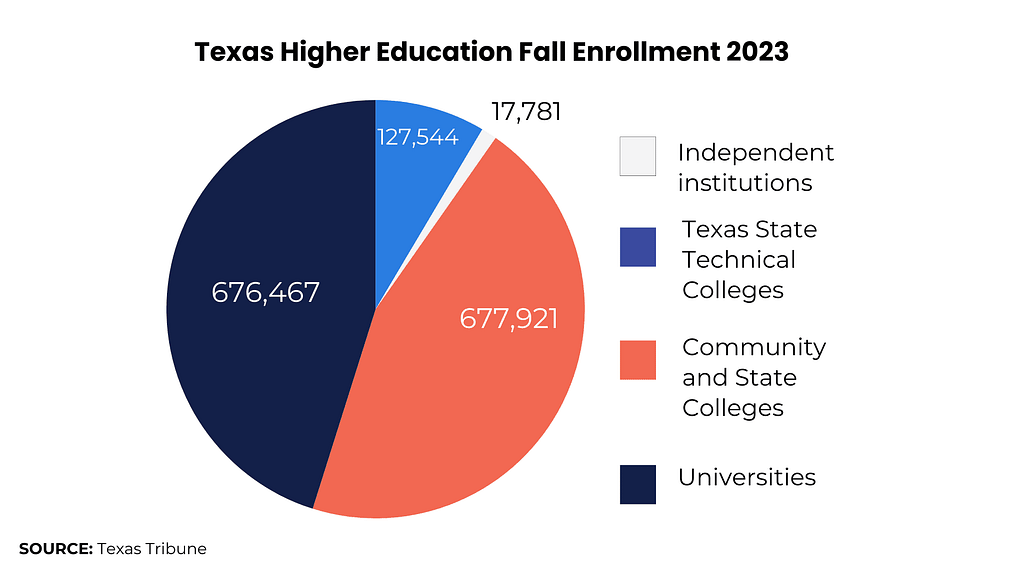
Did you know? Lone Star College is the state’s largest community college system by enrollment, serving over 76,000 Houston-area students in the Fall 2023 semester.
The Clarendon College system is the state’s smallest community college by enrollment, serving just under 1,400 students in Fall 2023.
Established in 1869, Weatherford College is the oldest community college.
What’s the difference between a community college and a university?
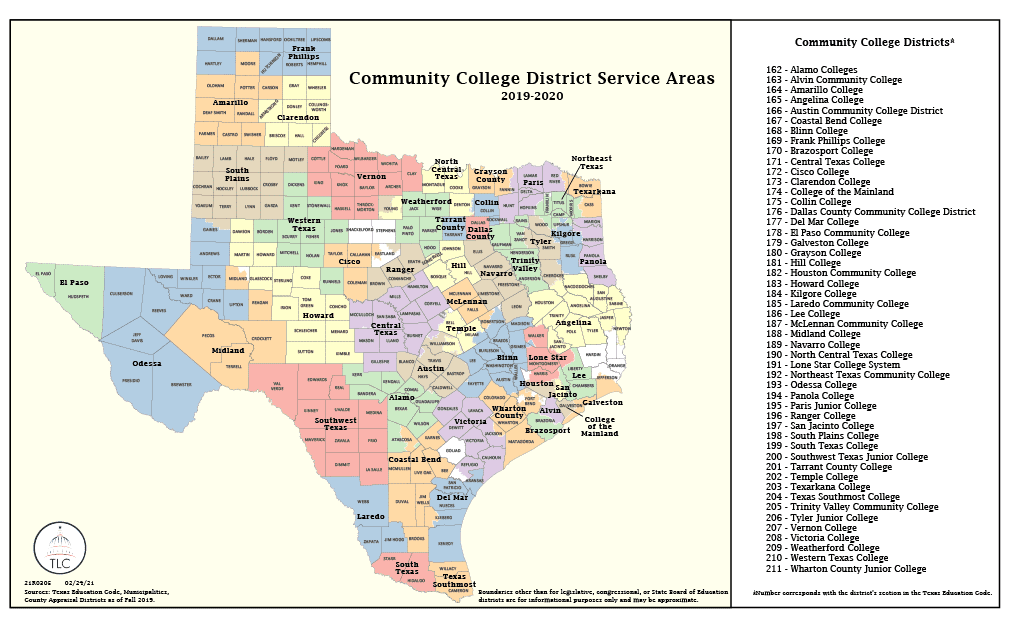
Community colleges offer:
- courses of study of a shorter duration than universities, including technical and vocational certifications.
- two-year programs leading to the Associate of Arts or Associate of Science degree.
- some community colleges, though, have begun to offer four-year bachelor’s degrees.
Most community colleges are also open enrollment, meaning they accept all applicants who meet enrollment requirements. Some specific programs, like nursing, may have competitive admissions.
Community colleges remain important to parents who are concerned about rising higher education costs over the years.
Here are the 2022 costs to pursue higher ed in Texas by type of institution:
- $18,807: the average annual in-state cost to attend a public four-year institution in Texas.
- $2,859: the average annual in-state cost to attend a public two-year institution in Texas.
What do community college students study?

Texas community colleges continue to be a great way of starting many Texans along the path of a rewarding career, awarding nearly 130,000 degrees and certificates in 2023 alone! That count includes:
40,780 technical and vocational certificates

These credentials represent a quicker and less expensive route toward preparing for a specific career. The time needed to earn one of these varies depending on the subject matter.
Some examples of a technical and vocational certificate program include: dental assistant, licensed vocational nursing, pharmacy tech, automotive tech, HVAC, engineering, paralegal, fire science & safety and police academy.
Did you know? Community colleges do an excellent job of preparing students to pass the exams needed to begin their career. In fact, 88% of community college certificate holders pass their certification or licensure exams.
1,522 bachelor’s degrees

While these four-year degree programs are most commonly associated with universities, community colleges also award bachelor’s degrees.
Did you know? The number of bachelor’s degrees awarded by community, technical and state colleges has surged dramatically in recent years, up 46% from 2022 and 245% from 2019.
87,661 associate’s degrees

Most degrees awarded by community colleges are the more affordable and less time consuming two-year associate’s degree. The number of degrees given, though, is down 4% from 2021.
The associate’s degree programs with the most enrollment in Texas include the liberal arts, health professions, and business and marketing.
The new faces of community college

While four-year universities still cater overwhelmingly to the traditional college-age population, community colleges increasingly serve students both younger (high school students) and older (midcareer adults looking to add skills).
Community colleges across the state are adjusting to this changing student body by meeting these new students where they are, either by accommodating non-traditional school schedules or different learning styles.
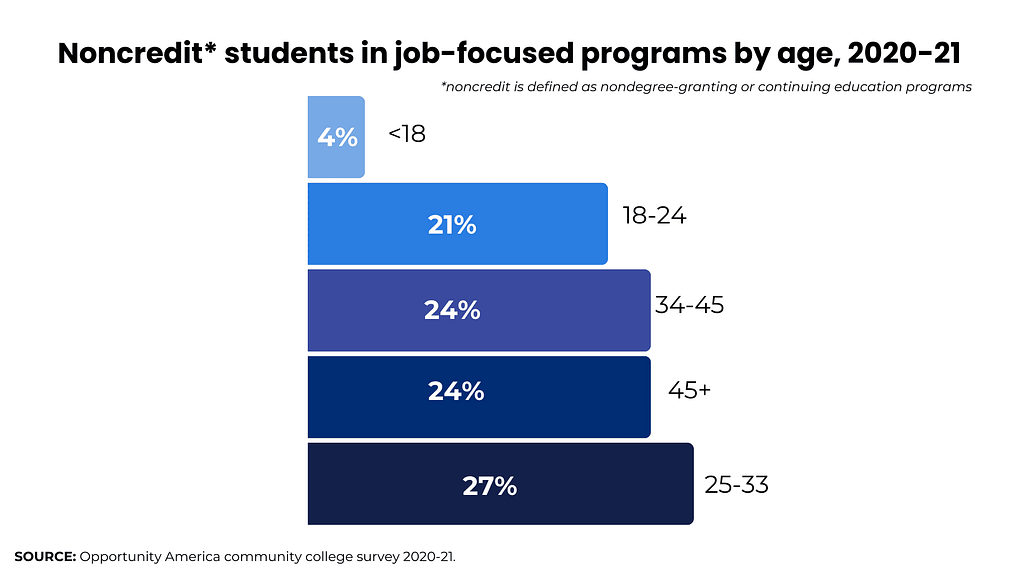
Many of these non-traditional students are not taking a full academic load, either. More than seven in 10 students enrolled in the fall of 2023 were part-time students, meaning they were taking less than 12 credit hours.
Readying students for success begins as early as high school … with dual credit
In a growing trend both in Texas and nationwide, more and more high school students are getting a jump start on college by enrolling in college courses for which they earn dual credit on their high school and college transcripts.
Did you know? More than 186,000 Texas students in 2021 were enrolled in these dual credit courses with more than 90% of these students taking these courses at a community college.
Texas has long been a national leader in dual credit enrollment. From 2001 to 2021, students under age 18 at public community colleges in Texas increased by almost 500% from 29,000 to 171,000, according to data from Texas A&M.
Nearly one-quarter of credit enrollments at Texas community colleges were less than 18 years old. In 2020, 25% of credit-seeking students were in dual enrollment programs, according to the Federal Reserve Bank of Dallas.
By expanding access to dual credit courses, community colleges are transforming high schools into effective classroom-to-career pipelines.
Under-18 dual credit enrollment by state, 2001-2021
 Source: Texas A&M; to further explore the state-by-state data, please click here.
Source: Texas A&M; to further explore the state-by-state data, please click here.
Setting up community colleges for success: Funding now rewards improved outcomes

Historically, community colleges in Texas received funding based on enrollment — the more students enrolled, the more funding the school received. This provided an incentive for increasing enrollment, but not for improving outcomes.
In addition to investing an additional $691 million into the state’s community college system, HB 8 established a new set of funding formulas, changing how Texas provides community colleges with state dollars.
The legislation overhauled the enrollment-based system to more directly align community college funding to completion of a postsecondary credential that has proven workforce value.
How are community colleges using the new funds? One important way that community colleges are using the new funds is by offering free tuition.
High school students in Corpus Christi no longer have to pay tuition to take dual credit courses at Del Mar College, and beginning with the class of 2024, graduates from Austin-area high schools will receive free tuition at Austin Community College.
How are community colleges helping students create career pathways?
Many Texans must balance going to school to improve their job skills with the demands of their current employment and their family.
As a result, workers often seek new job skills credential by credential, allowing them to advance one rung of the career ladder at a time. Community colleges are ideally placed to help with this new approach to building a career.
Consider this career pathway map developed by the Texas Association of Community Colleges for cardiovascular technologists and technicians:
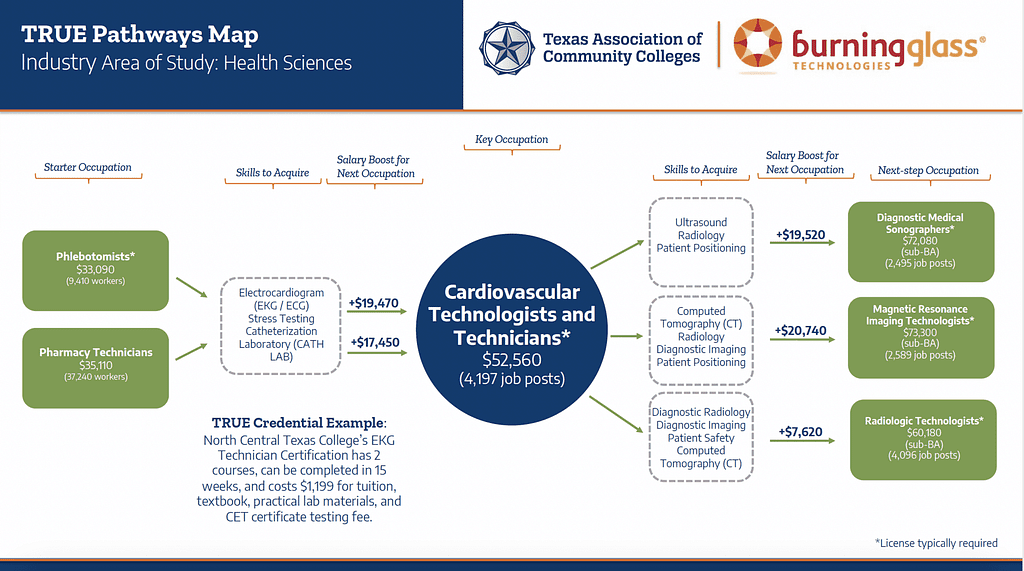
Not only do these flexible pathways prepare students for further education that can deliver higher wage outcomes, it also provides improved job and wage security for students who must work while continuing their education.
Texas 2036 President and CEO David Leebron on the vital role of community colleges

(L-R) Alamo Colleges District Chancellor Mike Flores, San Jacinto College Chancellor Brenda Hellyer and Texas 2036 President and CEO David Leebron discuss the vital role played by community colleges in shaping tomorrow’s workforce during the Texas Association of Community Colleges’ Summer Meeting in Austin on Aug. 1, 2024.
Texas 2036 President and CEO David Leebron addressed the Texas Association of Community Colleges’ summer meeting in Austin last week.
In an afternoon panel on community colleges’ role in shaping opportunity for all Texans, David discussed the changing classroom-to-career pipeline and those schools’ role in the educational and workforce development system.
To read David’s remarks in their entirety, please click here.
If you were to enroll in community college this fall, what would you study?

